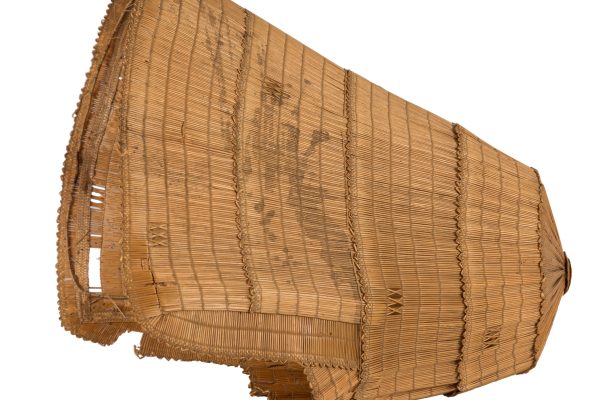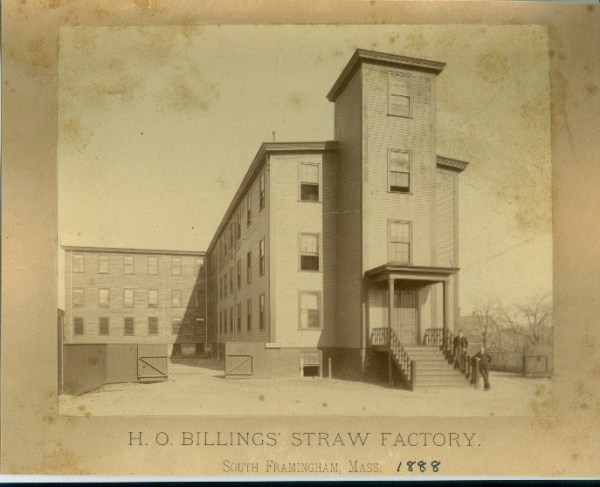Did this ever happen to you? You spy something really special in a store’s window, but it is too expensive. What to do? Well, this is exactly the dilemma that Betsey Metcalfe of Providence, Rhode Island found herself in. Betsey saw a Dunstable Bonnet, the latest fashion in bonnets imported from England, in a Providence shop window. However, the bonnet was too expensive, so Betsey figured out how to make the straw braid, and then fashioned her own bonnet at home. This was the beginning of a boom in the braided straw bonnet industry in New England.
Straw plaiting, or braiding, spread to the towns of Franklin and Wrentham in Southeastern Massachusetts and eventually to Framingham. In 1799 or 1800, Betsey Bennett (1782-1849), a Framingham teenager, and her mother began braiding grass and rye straw which they then made into bonnets and hats at home. Soon other women and girls joined in and a new “cottage” industry was born in Framingham.

The 19th century straw braid and bonnet industry quickly became very profitable. Boys and girls braided at home, sometimes they even took the straw to school to work on. Women carried bundles of it to braid when they travelled or visited friends. A skilled girl could braid between 10 – 12 yards of the fine “Dunstable” braid or 18 – 24 yards of the coarse a day. The fine braid sold for 3 to 3 ½ cents a yard. Shopkeepers even accepted the braided straw as payment for goods purchased.
In 1807, Major Benjamin Wheeler was one of the first men to open his own straw braiding business. By the 1830s, most of the straw bonnet production in Framingham had moved out of the homes and into factories which were built in the area around the railroad station in South Framingham. Between the years 1830 to 1860, straw braid and bonnet manufacturing was the largest industry in Framingham. By 1865, 50 men and 800 women made their living braiding straw and making bonnets and hats in Framingham. That year, 107,000 bonnets and 60,000 hats were produced and shipped all over the United States.
By the 1890s, fashion changed, demand for these types of hats and bonnets declined, and eventually all the factories closed.

Now back to Betsey Bennett. Little information has been recorded about the life of this young girl who changed the economic climate of her hometown in the early 19th century. But we do know that Betsey must have been a skilled straw braider and bonnet maker because she was awarded a $5.00 prize for her entry of an imitation leghorn straw bonnet in the 1822 Cattle Show at Brighton (a country fair). Betsey never married and died of consumption on February 5, 1849 at the age of sixty-seven years. She is buried in the Church Hill Cemetery.
Facts
Born: January 26, 1782
Died: February 5, 1849
Parents: Joseph & Mary (Swift) Bennett
Bibliography
Baldwin, Thomas W., comp. Vital Records of Framingham Massachusetts to the year 1850. Wright & Potter Printing Co., 1911. Archive.org https://archive.org/details/vitalrecordsoffr00fram Accessed 31 Mar. 2017.
“Family Tree: The Carr-Bennett Heritage: Surename: Bennett. Tribalpages. http://www.tribalpages.com/family-tree/leebennett39 Accessed 31 Mar. 2017.
Fessenden, Thomas. The New England Farmer. 26 Oct. 1822. Vol. 1, no. 13 p. 99 Thomas W. Shepard, 1823. Books.google.com https://books.google.com/books?id=VTTOAAAAMAAJ&pg=RA1-PA227&lpg=RA1- PA227&dq=betsey+bennett+framingham+mass&source=bl&ots=AyCtoB5wfr&sig=aZt CIexw-VvwQ4S9YGkacmX66wY&hl=en&sa=X&ved= 0ahUKEwi6voTuxYHTAhVkwYMKHbwyBCwQ6AEITDAJ#v=onepage&q= betseybennettframinghammass&f=false Accessed 31 Mar. 2017.
Herring, Stephen. Framingham: An American Town. Framingham Historical Society, The Framingham Tercentennial Commission, 2000.
Stanley, Autumn. Mothers and Daughters of Invention. Scarecrow Press, 1993.
Temple, Josiah H. History of Framingham, Massachusetts, 1640-1885. A special Centennial year reprinting of the 1887 edition. New England History Press, 1988.